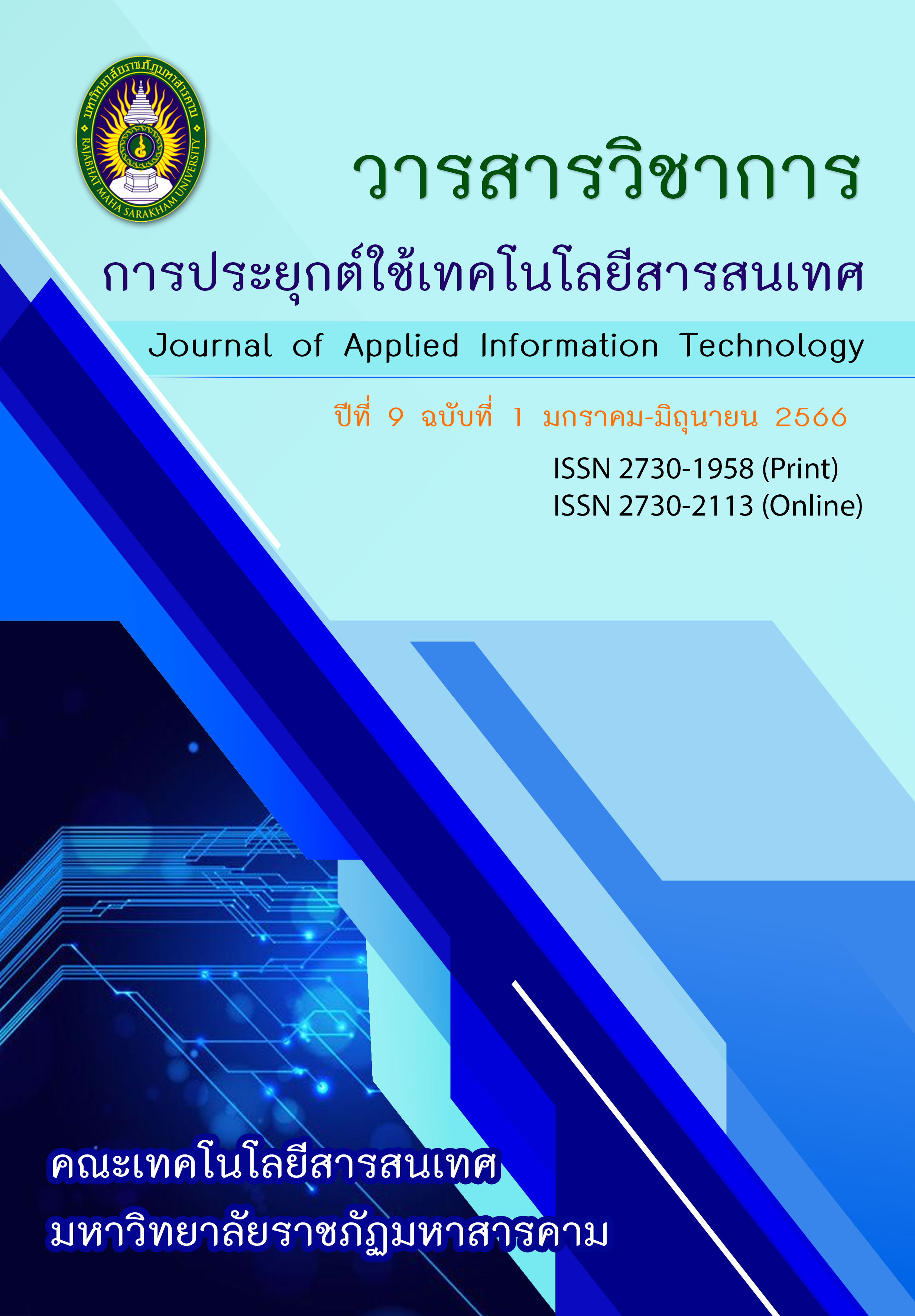The Development of the Simulated Situations for RTAF Cyber Range The Development of the Simulated Situations for RTAF Cyber Range
Main Article Content
Abstract
The objectives of this research were 1) to study situational problems for RTAF cyber range that are appropriate and in line with the needs of the Royal Thai Air Force (RTAF) 2) to explore a guideline to create a cyber range that is customizable for cyber operations training according to the required purposes 3) To evaluate the body of knowledge for creating a situational problem for a cyber range and to find ways to improve such research in the future. First, the researchers studied cyber situational problems currently used to assess the skills and competencies of RTAF cyber warriors. Moreover, the researchers studied and explored methods to create a body of knowledge for the process of self-generating cyber situations which helped reduce the use of the government budget for outsourcing the production of cyber situation problems from the private sector. Finally, the researchers evaluated the research findings by professional cyber staff from the RTAF Cyber Center which is the main responsible agency for the cybersecurity of the RTAF and by regular users.
The research findings showed that 1) a pattern for developing a situation problem for a cyber warfare model suitable for the RTAF required the inclusion of problems for practicing offensive skills and problems for practicing defensive skills 2) creating a flow of creations for a cyber range helped facilitate and reduced the skill gaps of situation problem creators. 3) assessment results of the application of knowledge used to create situational problems for a cyber range, including the ability to customize situation problems from RTAF cybersecurity experts were at a high level of satisfactory.
Article Details
References
กองทัพอากาศ. (2563). ยุทธศาสตร์กองทัพอากาศ 20 ปี (พ.ศ.2561 - 2580) (ฉบับปรับปรุง พ.ศ.2563). www.rtaf.mi.th/th/
Documents/Publication/RTAF%20Strategy_Final_04122563.pdf
Yamin, M., Katt, B., & Gkioulos, V. (2020). Cyber ranges and security testbeds: Scenarios, functions, tools and
architecture. Computers & Security, 88, 101636. https://doi.org/10.1016/j.cose.2019.101636
Davis, J., & Magrath, S. (n.d.). A Survey of Cyber Ranges and Testbeds. DTIC. https://apps.dtic.mil/sti/citations/
ADA594524
Diogenes, Y., & Ozkaya, E. (2018). Cybersecurity??? Attack and Defense Strategies: Infrastructure security with
Red Team and Blue Team tactics. Packt Publishing Ltd.
Chouliaras, N., Kittes, G., Kantzavelou, I., Maglaras, L. A., Pantziou, G., & Ferrag, M. A. (2021). Cyber Ranges and
TestBeds for Education, Training, and Research. Applied Sciences, 11(4), 1809. https://doi.org/10.3390/app11041809
Chiueh, S. N. T. C., & Brook, S. (2005). A survey on virtualization technologies. Rpe Report, 142.
Messier, R. (2019). CEH v10 Certified Ethical Hacker Study Guide. John Wiley & Sons.
Ned Chapin. 2003. Flowchart. Encyclopedia of Computer Science. John Wiley and Sons Ltd., GBR, 714–716.
Ford, V., Siraj, A., Haynes, A., & Brown, E. (2017). Capture the Flag Unplugged. Proceedings of the 2017 ACM
SIGCSE Technical Symposium on Computer Science Education. https://doi.org/10.1145/3017680.3017783
Endicott-Popovsky, B., & Popovsky, V. M. (2014). Application of pedagogical fundamentals for the holistic
development of cybersecurity professionals. ACM Inroads, 5(1), 57–68. https://doi.org/10.1145/2568195.2568214
Alotaibi, F., Furnell, S., Stengel, I., & Mavroudis, D. (2016). A Review of Using Gaming Technology for Cyber-
Security Awareness. International Journal for Information Security Research, 6(2). https://doi.org/10.20533/
ijisr.2042.4639.2016.0076
Gurnani, R., Pandey, K. M., & Rai, S. K. (2014). A scalable model for implementing Cyber Security Exercises.
International Conference on Computing for Sustainable Global Development. https://doi.org/10.1109/
indiacom.2014.6828048
Yamin, M., & Katt, B. (2019). Cyber Security Skill Set Analysis for Common Curricula Development. Availability,
Reliability and Security. https://doi.org/10.1145/3339252.3340527
ปุณณวิช ธรรมาธร, ธนบัตร ปลัดศรี และ พงศ์วิจักขณ์ กุดั่นนิล. (2556). การพัฒนาสนามทดสอบการโจมตีทางไซเบอร์ สำหรับ
นักเรียนนายเรืออากาศ บนระบบการประมวลผลแบบคลาวด์. [รายงานการวิจัย]. โรงเรียนนายเรืออากาศนวมินทกษัตริยาธิราช.
Sinha, S. (2018). Beginning Ethical Hacking with Kali Linux. Apress EBooks. https://doi.org/10.1007/978-1-4842-
-2
Likert, R. (2017). The method of constructing an attitude scale. In Scaling. (pp. 233-242). Routledge.
Richard Scroggins. (2014). SDLC and Development Methodologies. Global Journal of Computer Science and
Technology, 14(C7), 21–22. https://computerresearch.org/index.php/computer/article/view/148
Zhang, J., Meng, B., Zou, L., Zhu, Y., & Hwang, G. (2021). Progressive flowchart development scaffolding to
improve university students’ computational thinking and programming self-efficacy. Interactive Learning
Environments, 1–18. https://doi.org/10.1080/10494820.2021.1943687


